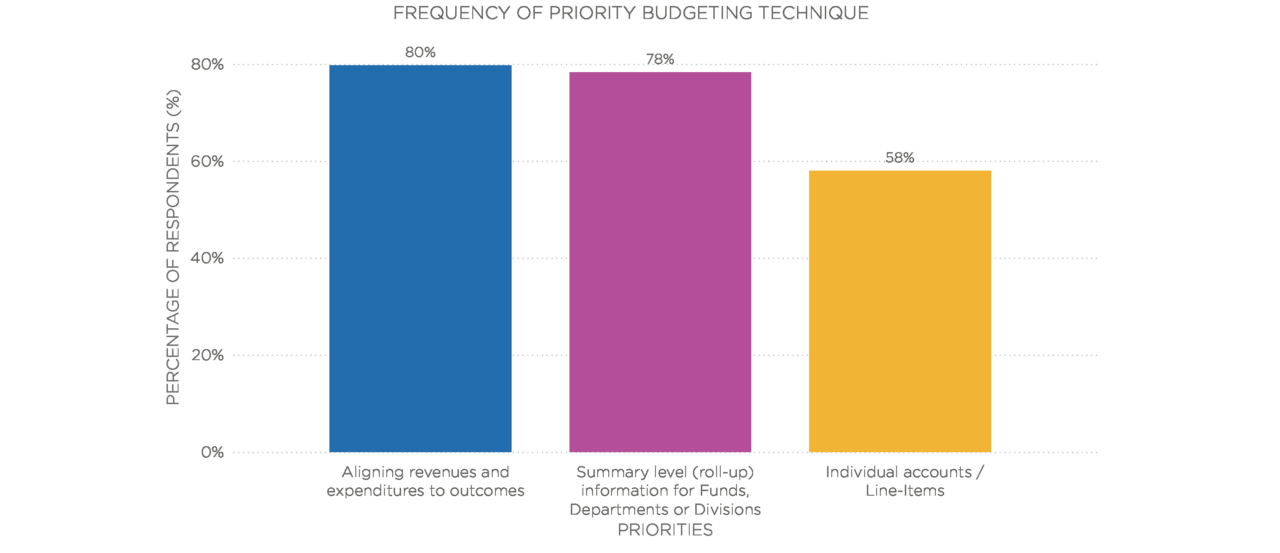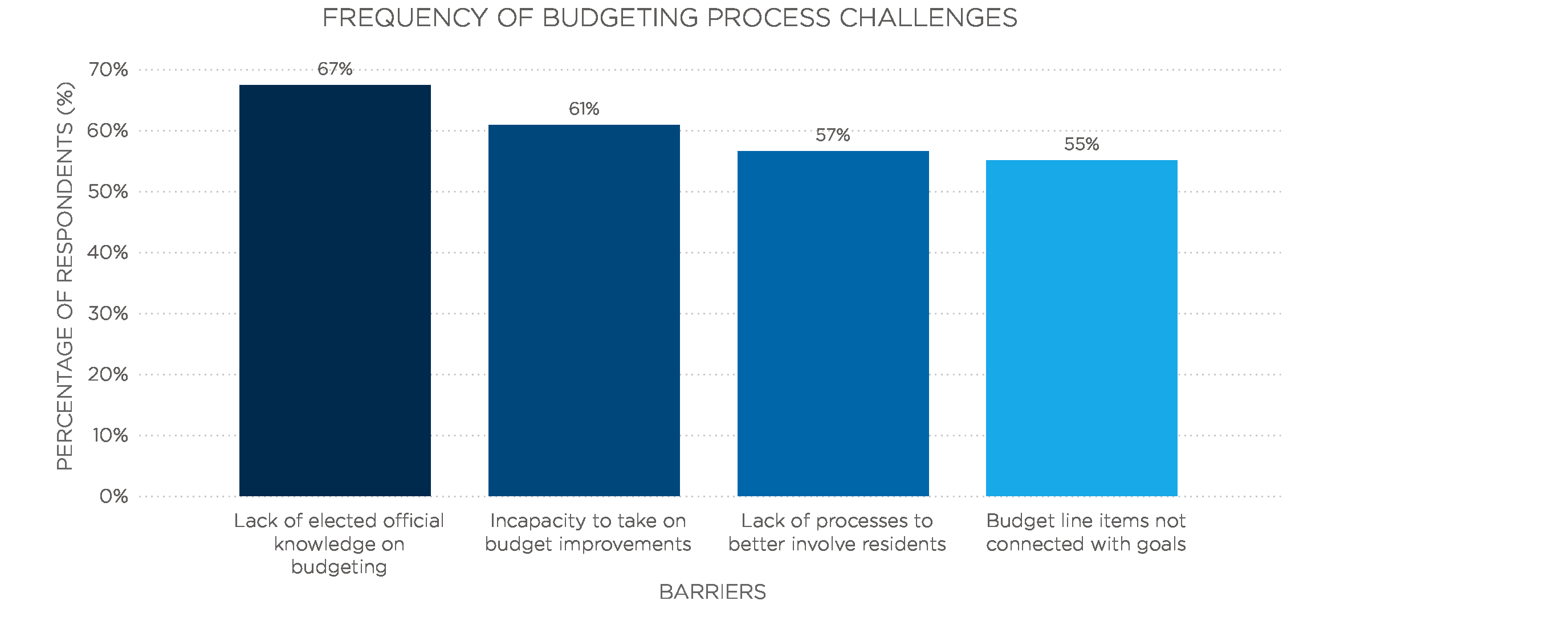Co-authored by David Goldman, Deputy City Administrator, City of Oak Harbor and a member of Government Finance Officers Association (GFOA).
Budgeting is not the most exciting part of municipal operations, but it is often a critical element in how a city, town or village reflects its priorities. A joint initiative between the National League of Cities (NLC) and the Government Finance Officers Association (GFOA), called the Rethinking Budget, examines how advances in the scientific understanding of decision-making and information processing technology, among other relevant fields, could be used to make local government budgeting more responsive to the challenges communities face and replaces the Recommended Budget Practices adopted 27 years ago in 1998.
As part of the initiative, NLC and GFOA developed a survey to learn about local governments’ current budgeting practices and their capacity to adopt new budgeting methods. The survey was distributed nationwide to city mayors and city financial officers from municipalities of different sizes. Three main questions inquired how respondents (including mayors, city managers and local government staff) feel about budget priorities, barriers to budgeting improvement and stakeholder satisfaction with municipal budgets.
The first question concerns city priorities of different budgeting focuses broken down between traditional account line items, summary-level information and aligning the budget with the organization’s outcomes or strategic plan. The traditional approach to budgeting has been criticized as freezing past decisions in place, not being strategic and focusing on minutia. An example of this is when the governing board spends an inordinate amount of time discussing the line item on office supplies and then afterwards passes a multimillion-dollar capital project with little discussion.
Adopting a rolling plan is recommended when comparing traditional budgeting with the conventional approach to strategic planning. A rolling plan accepts uncertainty and doesn’t try to be everything to everyone. Rather, it simply guides what to fund in the budget and ensures that strategies that stay relevant to changing realities are favored. This helps focus and simplify the budget by connecting it to organizational goals and outcomes. For the planning process to have a positive impact, it should involve a range of stakeholders from both inside and outside of government to ensure a collaborative process.
Based on the responses to this first question, cities are generally aligned with prioritizing more advanced budgeting techniques as the majority indicated that they prioritize more strategic approaches, as seen in Figure 1.
80% of Cities Prioritize Aligning Budgets to Priority Outcomes

Communication and being able to simplify complex concepts are vital skills for municipal budget officers to possess. Public finance staff need to be skilled in writing narratives, developing professional presentations and drawing people into conversations rather than talking at the audience and providing “expertise.” Dynamic budget officers can see the big picture as well as the minutia details and can help elected officials and the public see more options, test assumptions (and uncertainty) and choose the highest value options.
As Figure 2 shows, over 50 percent of respondents indicated four areas that are significant impediments to budget improvement: (in order of magnitude)
- A lack of elected official knowledge on budgeting and finance.
- Organizational capacity to take on budget improvements.
- A lack of good processes to involve residents meaningfully and efficiently.
- Difficulty with connecting budget line items to organizational goals and outcomes.
Connecting Budget Line Items to Organizational Goals and Outcomes is a Major Challenge

It has been known for decades that local governments struggle with how to engage citizens in the budget process and that the standard avenue for citizen engagement has typically been limited to the legally mandated public hearing or two that amount to little more than a chance for citizens to air their grievances at a microphone. The purpose of public engagement is to reestablish the legitimacy of local government as an institution, align public expectations with what the government can realistically approach, get feedback from a fractured public and provide an alternative to the politics of cynicism.
Understanding that public engagement needs leaders to be more like chefs and not cooks, there is no set recipe to follow that will work for all local governments everywhere. Broader designs can be implemented, like helping the public engage with complexity, incorporating quality over quantity and ensuring that the public engagement strategy works for elected officials.
More than two-thirds of “insiders” to the budget process (elected officials, department heads and budget office staff) broadly rated their satisfaction with the budget process. However, even these insiders estimated that only 42 percent of residents/the community were satisfied with the process.
Residents Are the Group Least Satisfied with the Budgeting Process in their Communities

Overall, our results suggest that local officials are using more advanced budgeting techniques. However, there is still a lack of understanding of the budgeting process from elected officials and satisfaction from the community.
In follow-up blogs, we will delve deeper into the data to cover the implications of the differences in perception between elected officials and city staff, how cities of different sizes tend to have different barriers impeding budget improvement and the commonalities between cities regarding the desire for budget process change.









